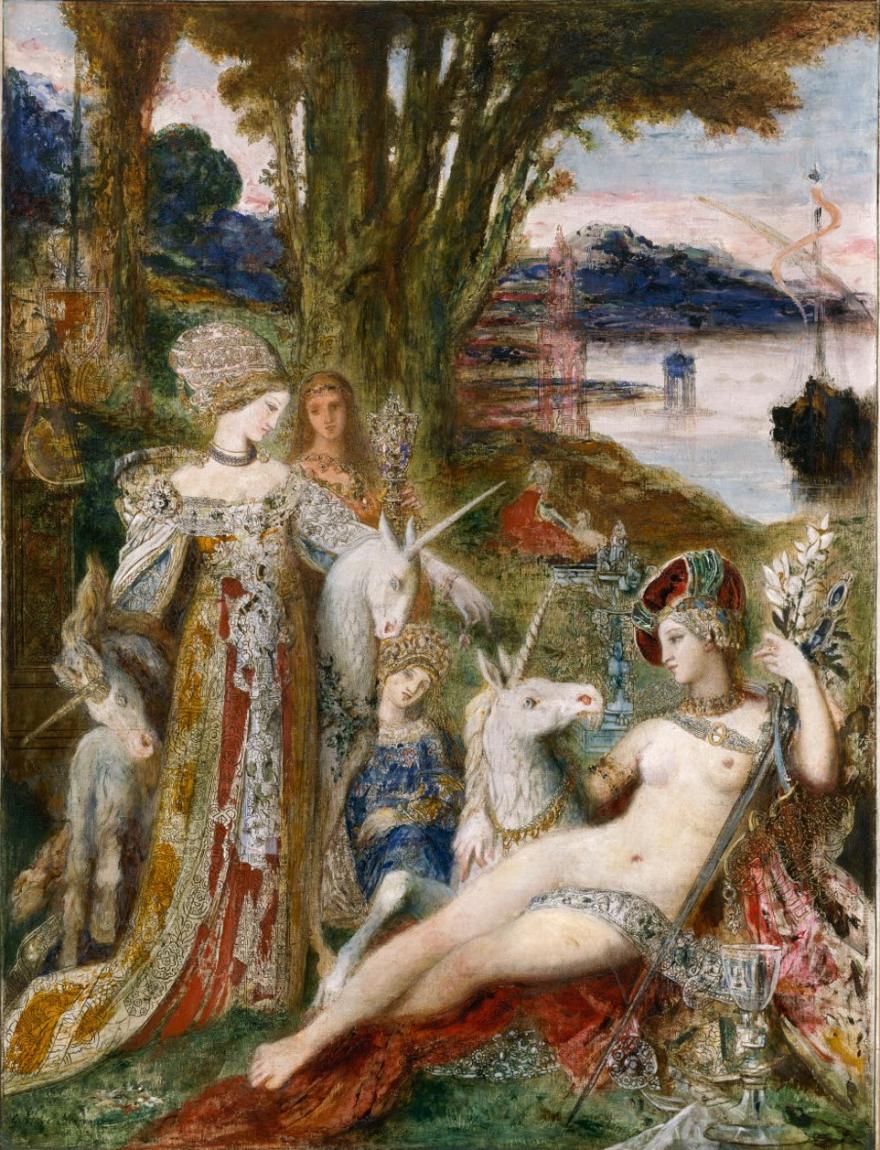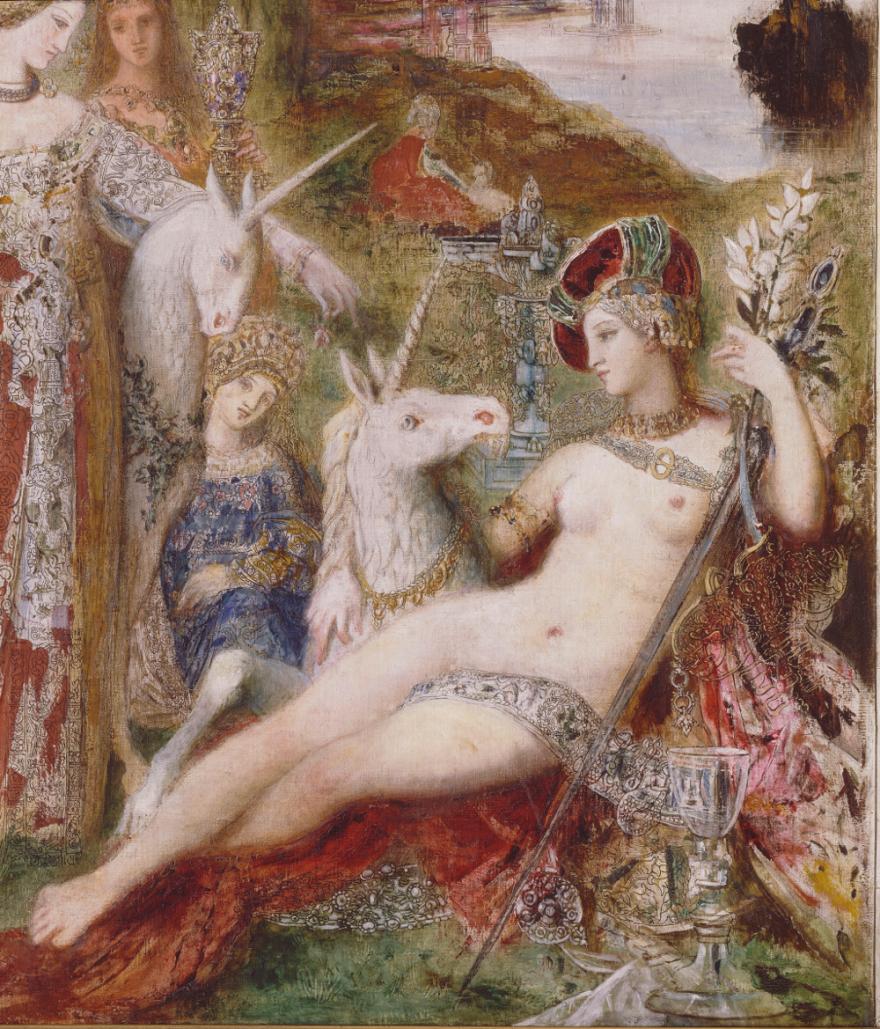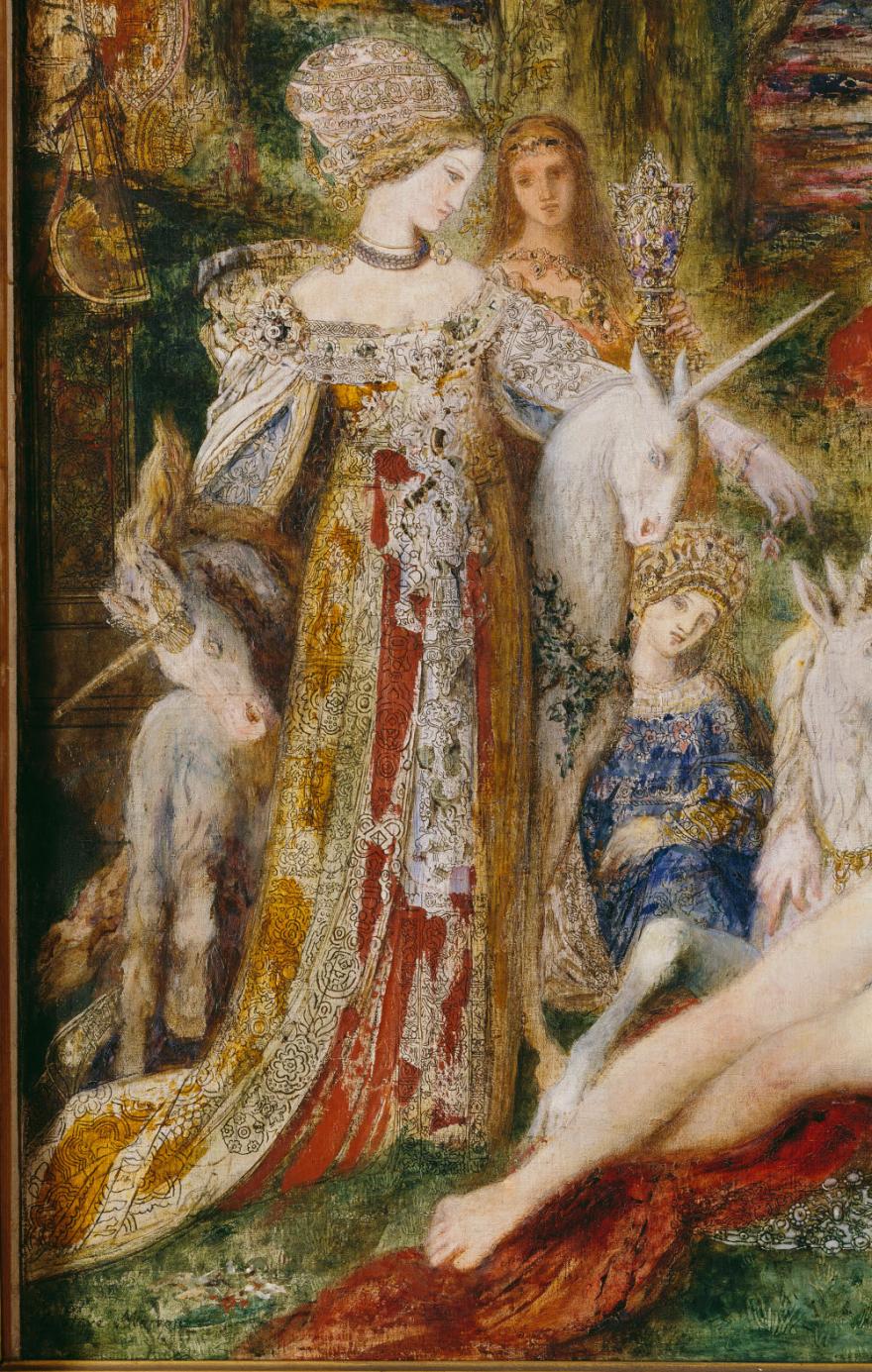Choix d'œuvres
The Unicorns [Les Licornes]
“I saw one of the most beautiful things that I have ever seen in my life!” wrote the collector Emile Straus on 14 July 1887 as he left Gustave Moreau’s studio, where he had just discovered The Unicorns. The painter refused to part with this work commissioned by Edmond de Rothschild, and substituted it with an impeccably finished watercolour: David Dancing in front of the Ark (whereabouts unknown). He was probably irritated by the comments of Rothschild, who wanted to see him put more effort into finishing the work, which Moreau refused to do. This furious note was aimed at the collector: “I’ve had enough of all these critical comments, the disapproval and theoretical rigidity of all these imbeciles, whose understanding of art, and everything else besides, is scarcely better than the average concierge or pork butcher. Whatever opinion they might hold of themselves, they are just idiots.”
The theme of this painting was inspired by the six famous tapestries of the La Dame à la Licorne [The Lady and the Unicorn] bought by the Musée de Cluny in 1882. In order to achieve the “necessary richness” the pillar of his aesthetic, Moreau blended medieval ornamental motifs with Renaissance motifs, and was quite prepared to look for sources in magazines like Le Magasin pittoresque: he referred to it as: “an enchanted isle with a gathering of women, only women, providing the most precious pretext for all the plastic motifs.” In the distance is the ship that brought these princesses to this strange place. Two of them have their arms around unicorns, which remain impassive. It was said that these wild, legendary creatures could only be tamed by virgins.
All the women here are richly adorned, one holds a lily, the symbol of purity, and a bejewelled sharp sword; on the clothes of another are delicately drawn fabulous animals and epic combats, including Saint George and the Dragon. The chalice in the right hand corner of the work – the Holy Grail? – adds to the dominant feeling of mystery. Moreau brings about an unusual disassociation between the drawing and the shimmering colours, obtaining chromatic and dramatic effects of a rare subtlety. This is one of the most fascinating and certainly one of the most enigmatic works that the master of Symbolism has bequeathed us.

![The Unicorns [Les Licornes]](/sites/moreau/files/o_cat.213.jpg)
![The Unicorns [Les Licornes]](/sites/moreau/files/o_cat.213-a.jpg)
![The Unicorns [Les Licornes]](/sites/moreau/files/o_cat.213-b.jpg)


